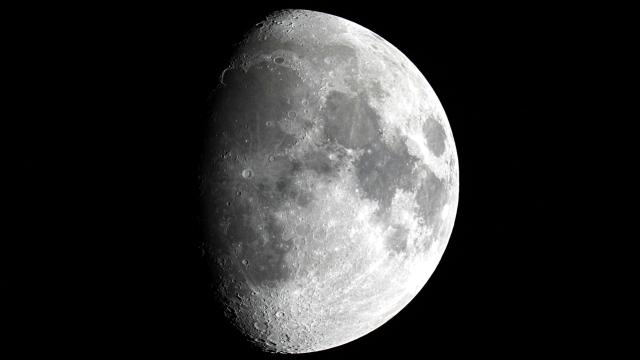What most people know about the moon is that it orbits Earth, and there may or may not be a giant face carved into it. But the luminescent orb contains multitudes that might interest layman stargazers, and understanding its phases is a good place to start. Memorising a simple mnemonic device can help your pursuit of becoming an amateur Galileo, or at least impress a friend or date.
First, a little bit about moon phases
The only reason we can even see the moon is because of the Sun, which is the sole source of light in our solar system. The moon enters phases depending on its orbit of the Earth; when the moon is completely illuminated by the Sun, we have a full moon.
Following the full moon, the orb’s light begins to gradually dim as it moves further away from the Earth, until it returns to delight us again with its glory (i.e., another full moon).
The moon presents in eight different phases throughout its 27-day cycle, distilled here by NASA:
-
New Moon
-
Waxing Crescent
-
First Quarter
-
Waxing Gibbous
-
Full
-
Waning Gibbous
-
Third Quarter
-
Waning Crescent
Because you’ll probably struggle to remember these terms without a little help, there’s a helpful acronym you can use to remember the order of moons. As the website Star in a Star points out, you can remember the order of moons through the phrase “Never Can Quit Getting Food,” which, if read via the first letters of each word, represents New Moon, Crescent, Quarter, Gibbous and Full (i.e. NCQGF).
Of course, the waning side of the moon’s then comes into play, which requires you to reverse the order of letters — FGQCN — for Full, Gibbous, Quarter, Crescent, and New.
Remember these three letters
The next mnemonic device to remember varies based on which hemisphere you live in, but for folks in the Northern Hemisphere, it’s “DOC.” For people in the Southern Hemisphere, the device is inverted and becomes “COD.” There isn’t really a standard scientific reason for the existence of this rule, as it’s merely the product of the shape of the visible moon.
It all hinges on what side of the moon is illuminated. Basically, if the right hand side of the moon is visible, while the left hand side is still darkened, then you have a “D” shape, which indicates a waxing crescent, and first quarter.
A full “O” represents a waxing gibbous and a full moon, while a “C” is represented by a waning gibbous, third quarter, or waning crescent, the latter of which looks the most like a “C.”
Of course, all of this becomes the opposite once you’re viewing the moon from the Southern Hemisphere. As EarthSky explains: “observers in the Northern and Southern Hemispheres see the moon apparently upside-down with respect to each other.”
Understanding the gibbous moon is key
The gibbous moon occurs on either side of the invisible new moon, making it either the waxing “D” or the waning “C” in the mnemonic device.
The website Sciencing elaborates on how this works, and how it can be instructive in understanding how the moon generally operates:
A gibbous moon is an almost complete moon, with a crescent of darkness covering one side of the moon. The gibbous moon’s light portion is slightly egg-shaped, and the gibbous moon comes on either side of the full moon.
Basically, the moon’s phases take place over the course of a month and you can track the cycle by keeping tabs on the “DOC” device. That way, you can look to the stars and tell your friends that a full moon is coming, and convince them you’re a cosmological sage.

Leave a Reply
You must be logged in to post a comment.